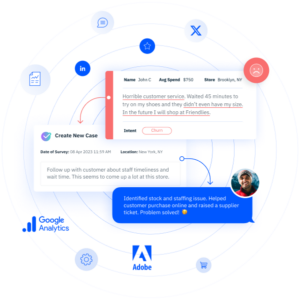Great Experiences Start from the Inside-Out
As long as I’ve been in this industry most of the innovations I’ve seen in understanding loyalty and delivering great experiences have centered on data. In particular, many of us have focused on accessing more data to unlock deeper customer insights.
Undoubtedly this has made a tremendous impact on a brand’s ability to understand their core customers and how best to deliver great experiences.
It’s interesting however that from the “front lines” I suspect that this volume of data is beginning to reach a point of diminishing returns.
I like to use the Internet itself as an analogy. You can pretty much find anything and everything online these days. However, if you were new to the world wide web, or if you are looking for something in particular, the breadth of information available can be intimidating. This is in some ways what’s driven the growth of “apps”. Most apps are curating online information to help users filter out the noise of the immense amount of data online, and to deliver content around a specific topic of interest, be it movies, technology news, sports, or whatever interests the user has.
In the early days of customer experience management location managers were amazed by simply having access to any feedback data regarding their customers and how they felt about them. As with many of us, those same location managers today are more harried than back then and also have access to more customer data than ever. The problem is that those two circumstances do not necessarily mix well for a few key reasons.
Location managers constrained by time.
One of the scarcest resources for most location level managers is time. While the insights that can be gleaned through traditional customer feedback reporting can be tremendously valuable the value is often not realized until an appropriate amount of reporting and analysis is done. In many instances this is time that location mangers simply do not have, with the demands of their daily tasks. If they do spend the time on reading reports and performing analysis, then other critical tasks may be neglected.
Location managers constrained by a lack of analysis expertise.
Even if location managers have the time to dedicate to reporting and analyzing customer feedback data, they may not have the expertise required to effectively use complex reporting tools. In these cases the complexity of the tools themselves can be a barrier to success. Locations will make poor choices and spend effort improving factors that do not change the overall customer experience.
Location managers with limited experience with the brand.
Over time, great managers will intuitively understand what needs to be done, and what needs to be prioritized to deliver great experiences. Managers with less experience with the brand will not have this ability. Insights and best practices gleaned from those intuitively great managers and top performing locations can be a tremendous asset in helping to deliver great experiences consistently across locations. More importantly these blueprints for success provide a guide as to where to start and what definitive goals to strive for.
Location managers only need access to the most applicable information to them. In fact some might even argue that location managers don’t need data at all. What they need is the actions and insights that the data can uncover. In other words, location managers need action plans not reports.
The good news is that this is the direction that customer experience management programs are going in. The next phase of innovation in CEM isn’t simply pulling more data, but taking a more active role in turning that data into real tangible actions.
